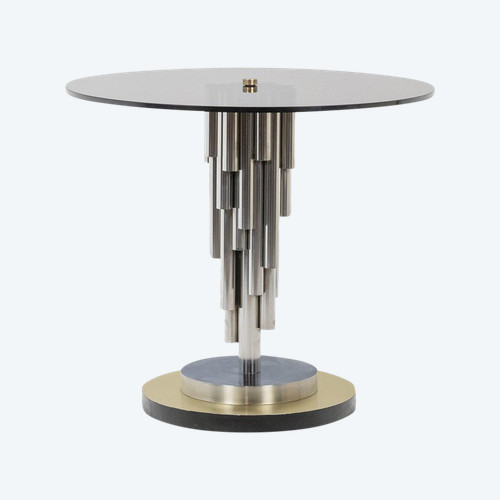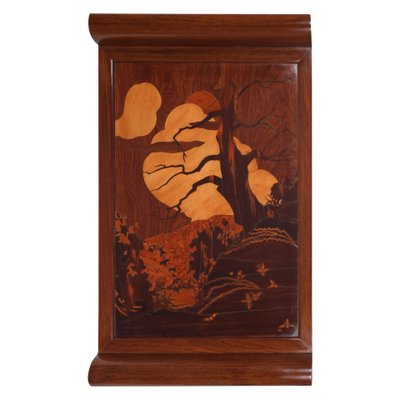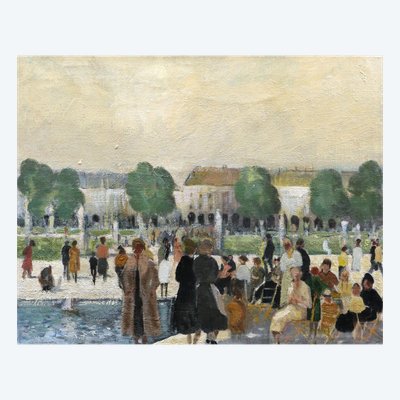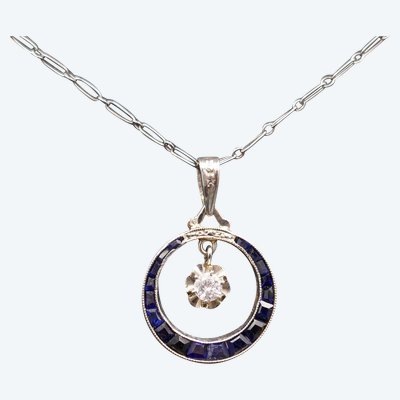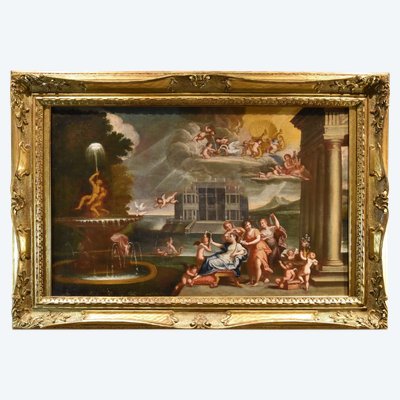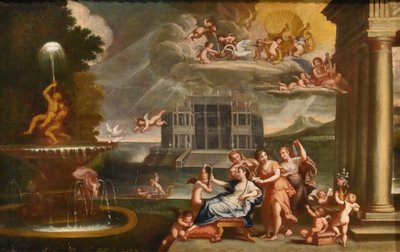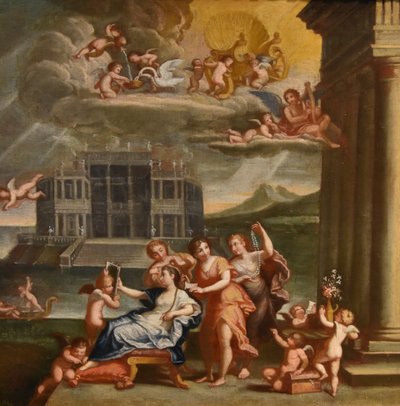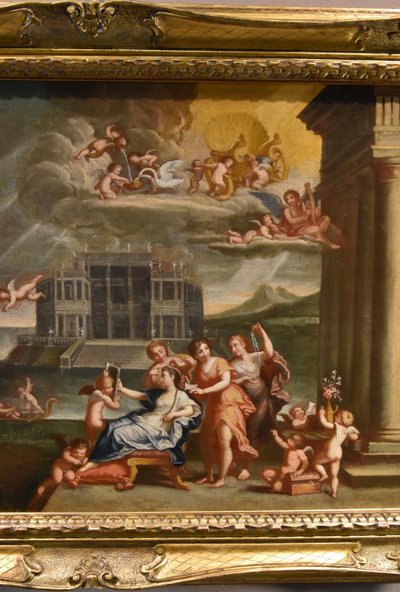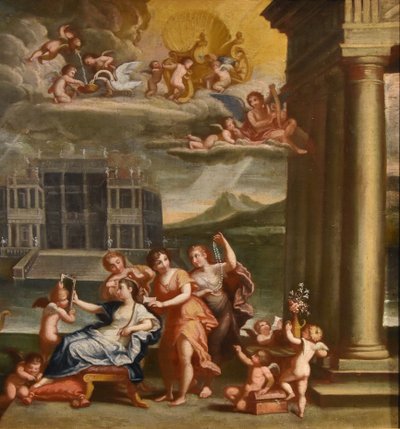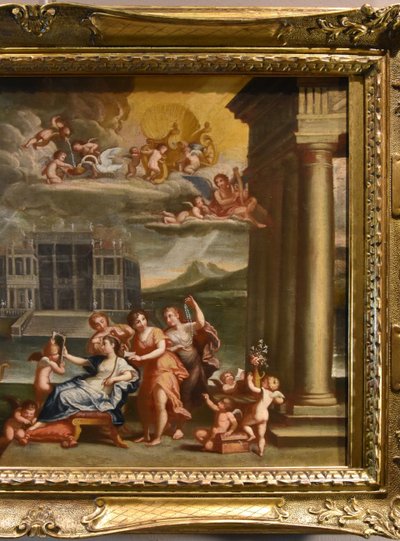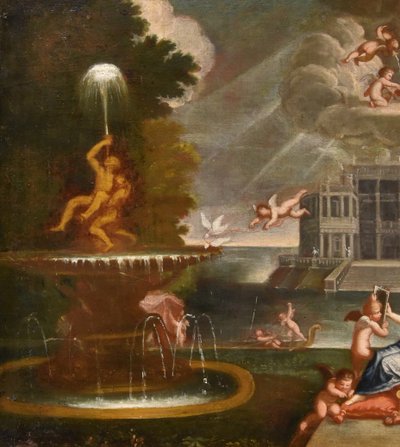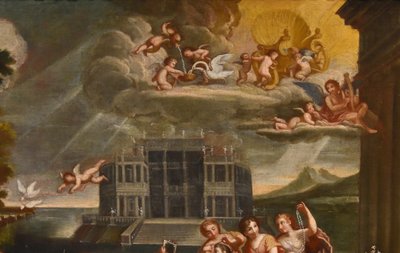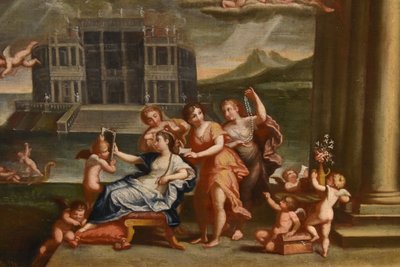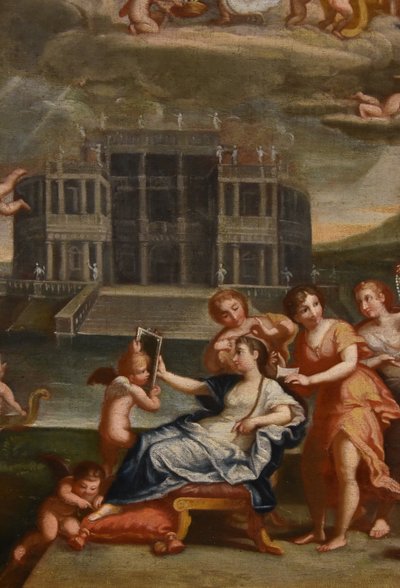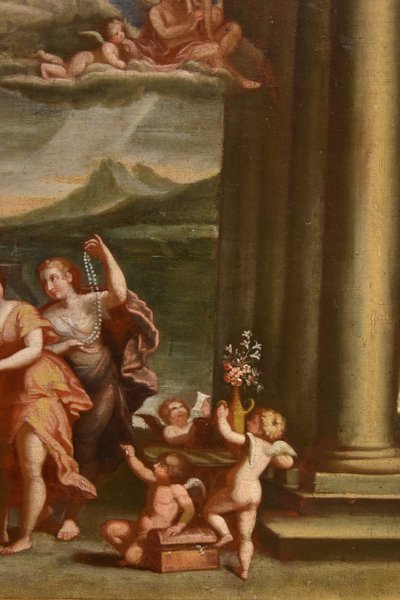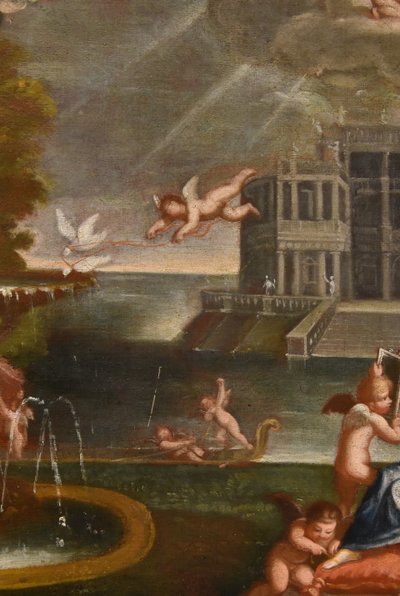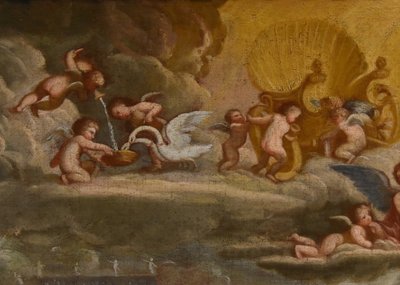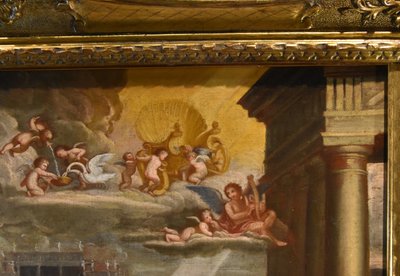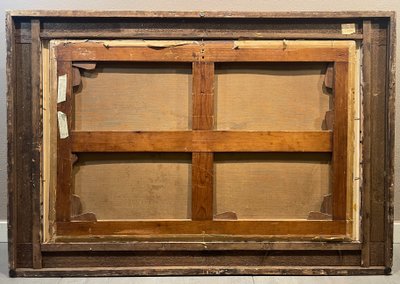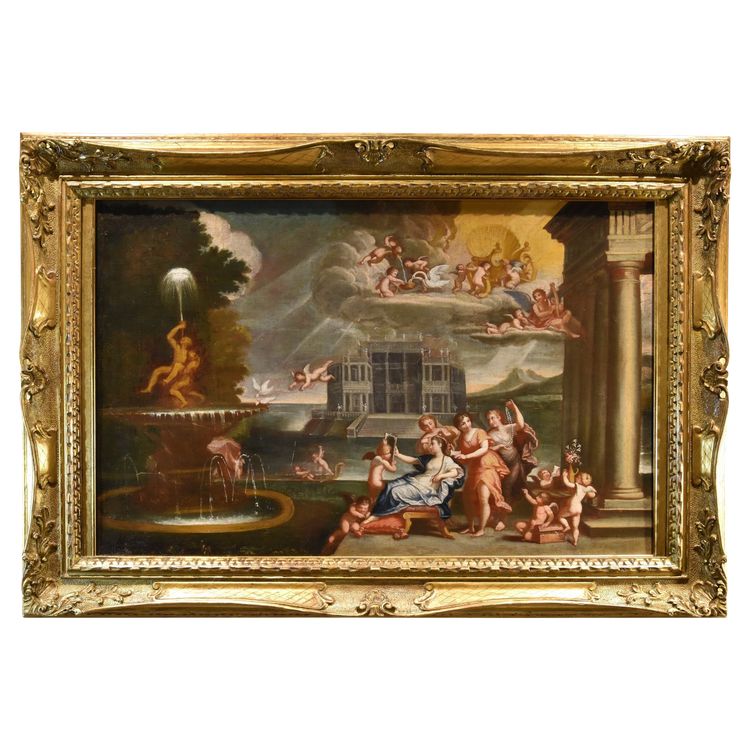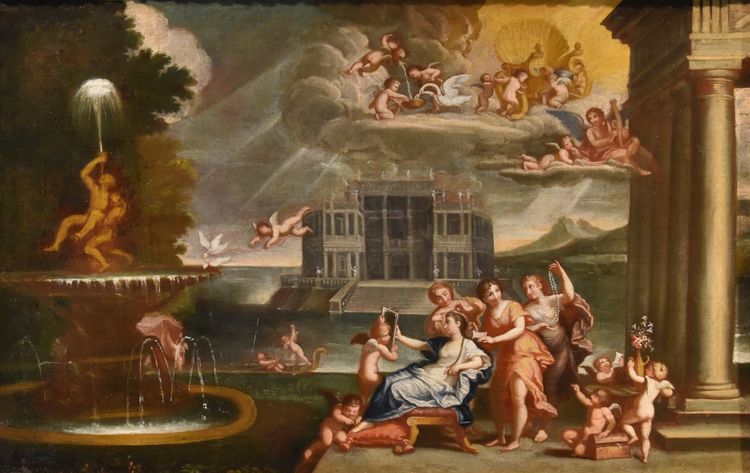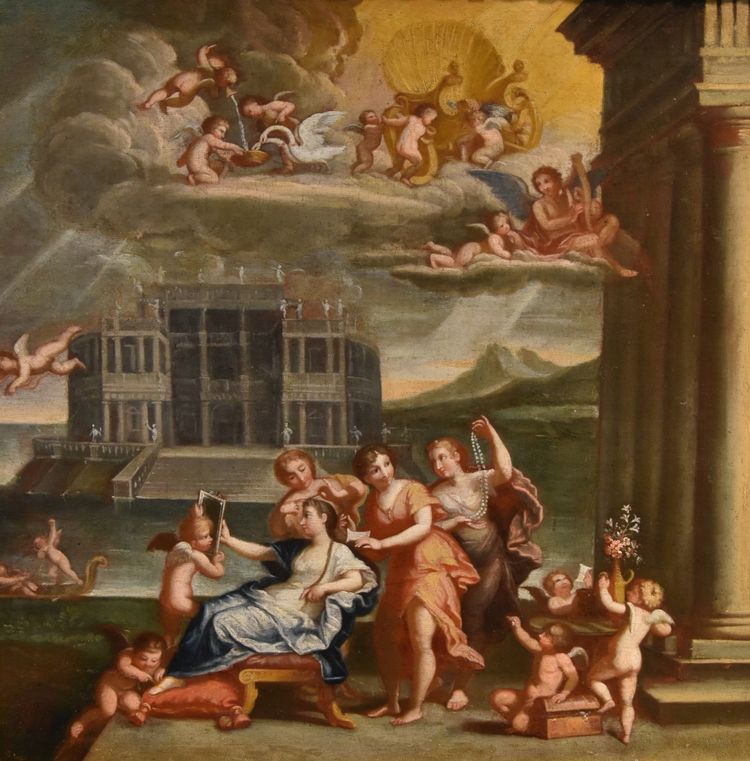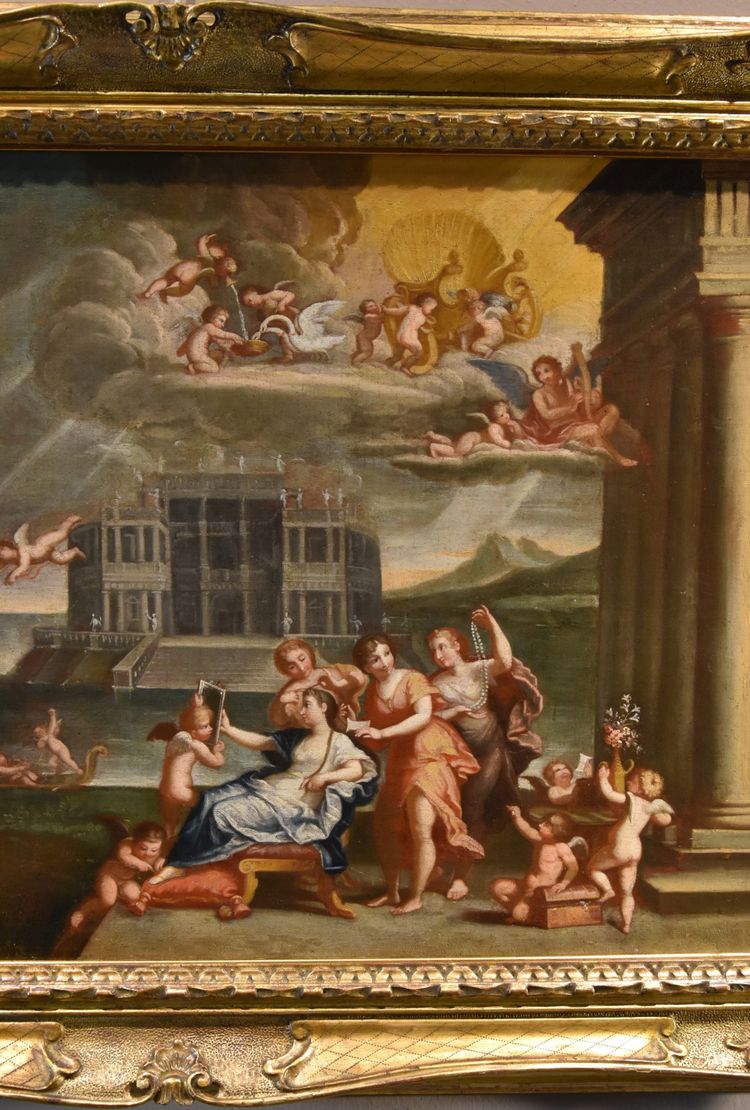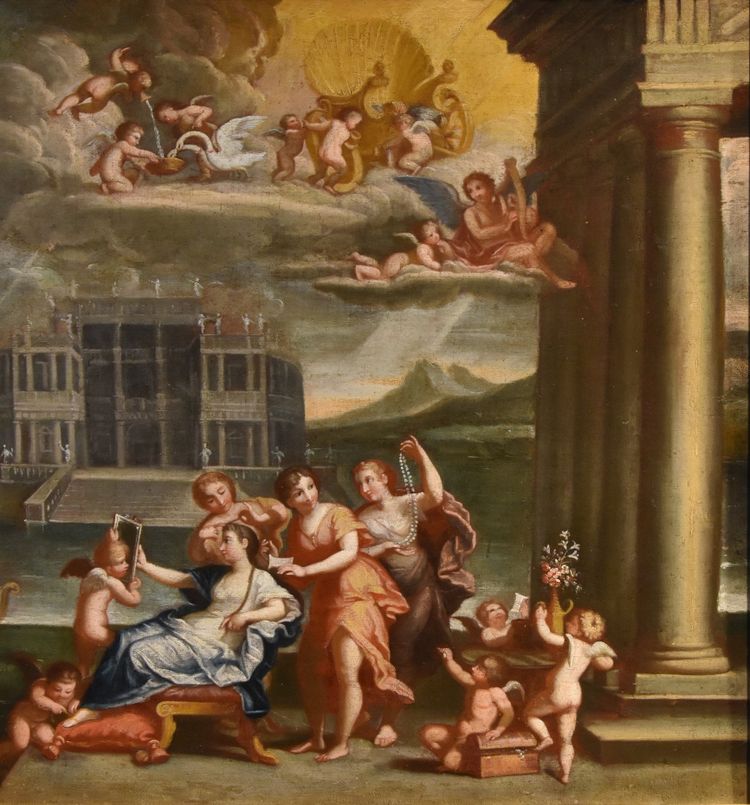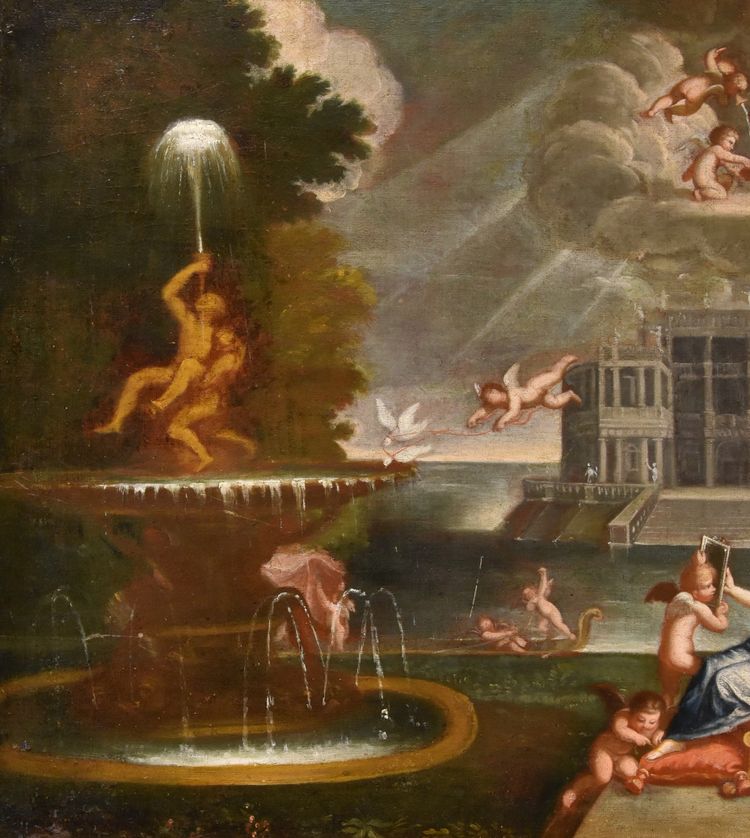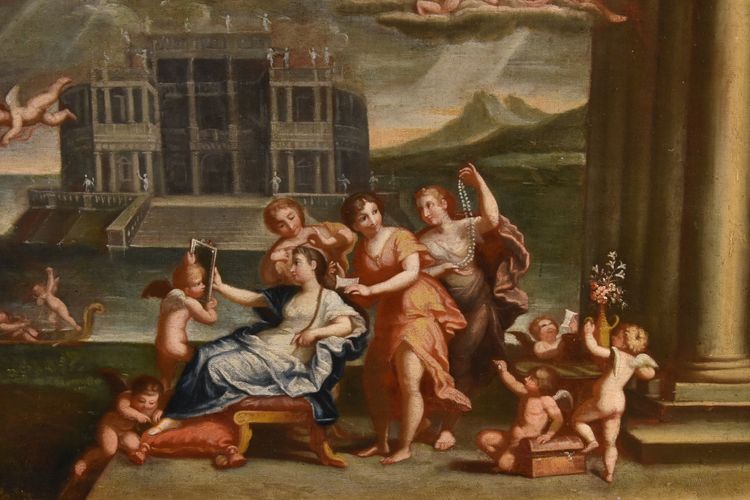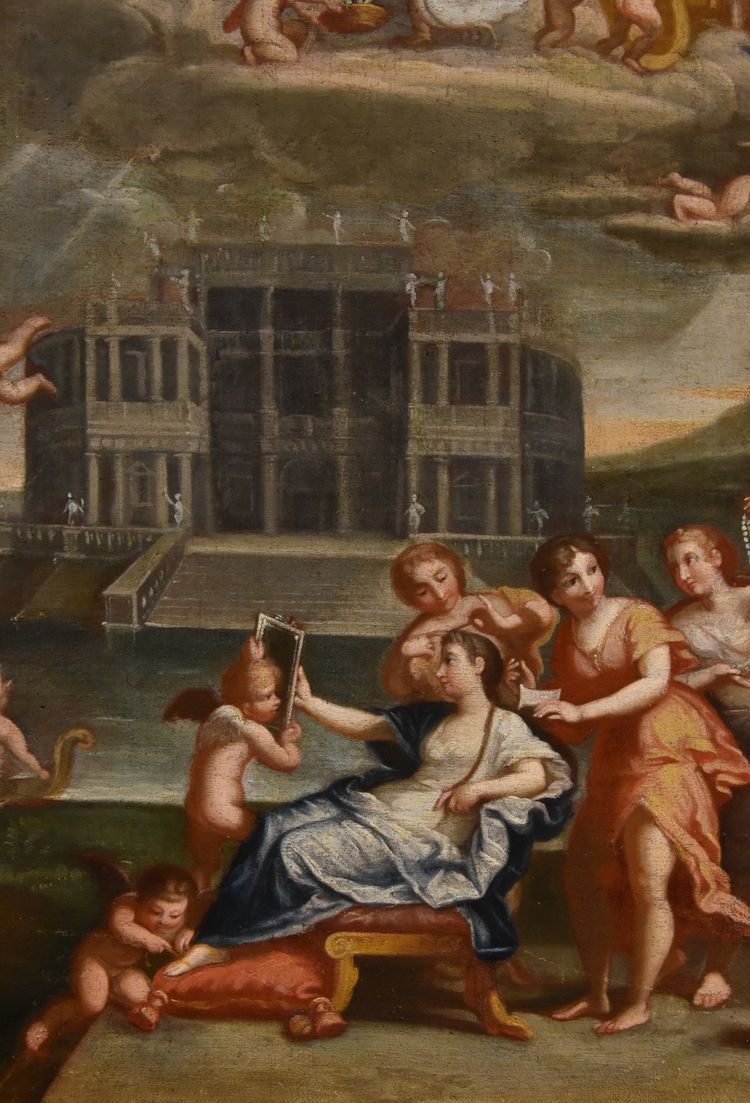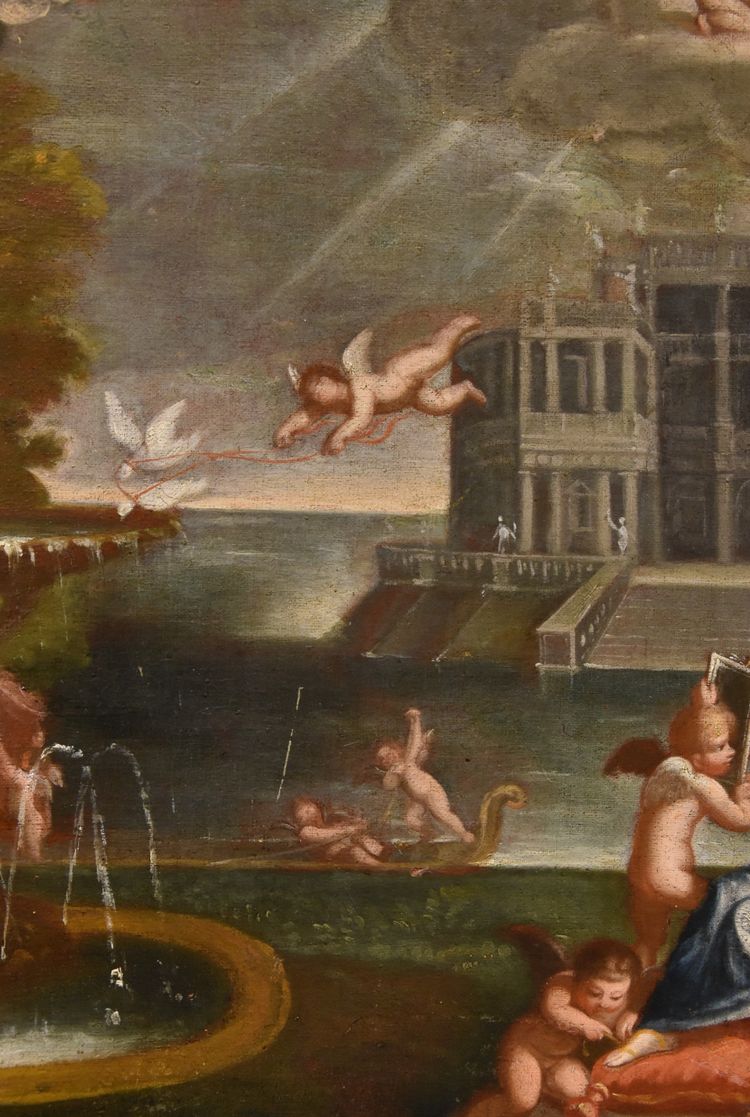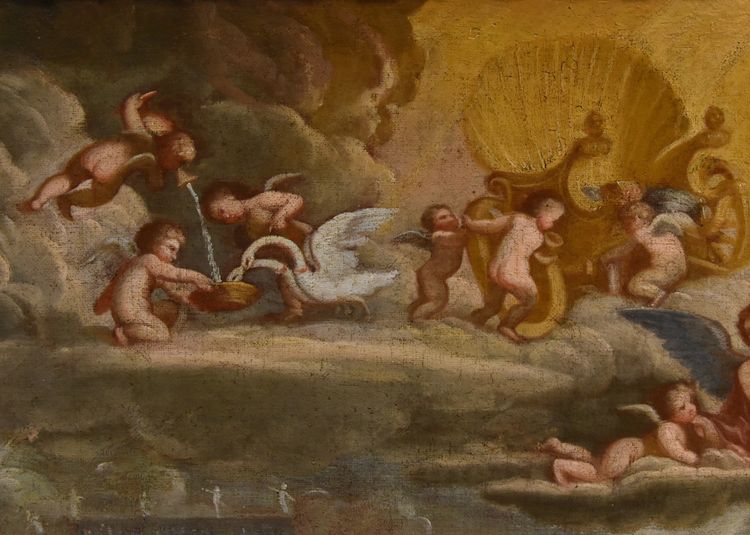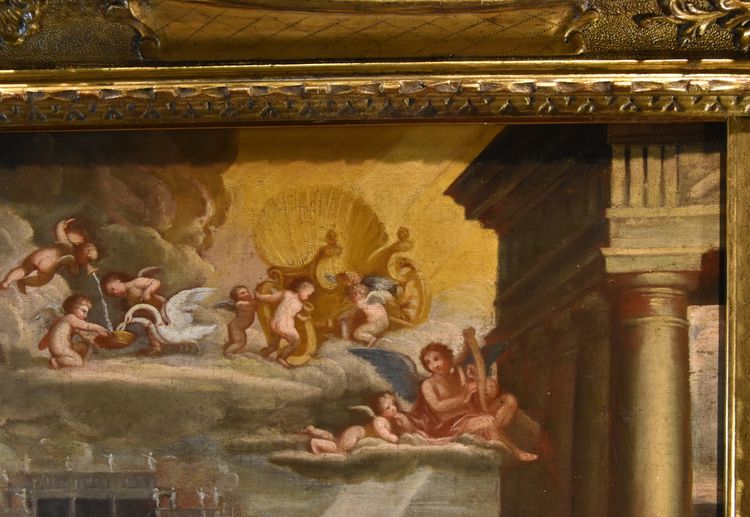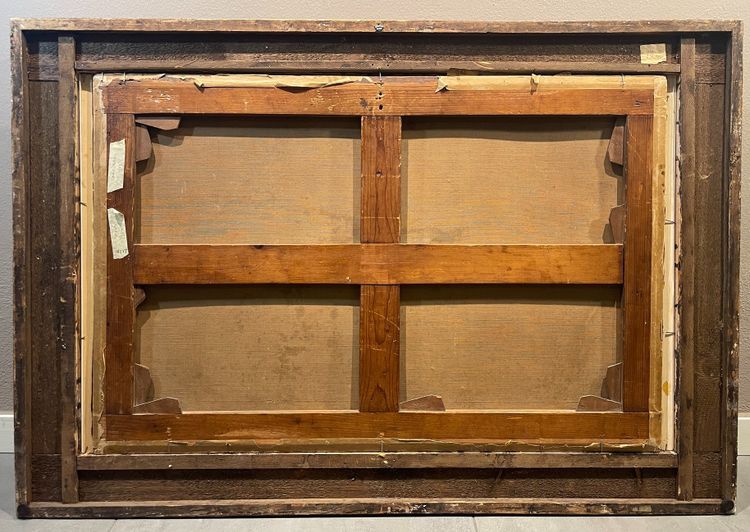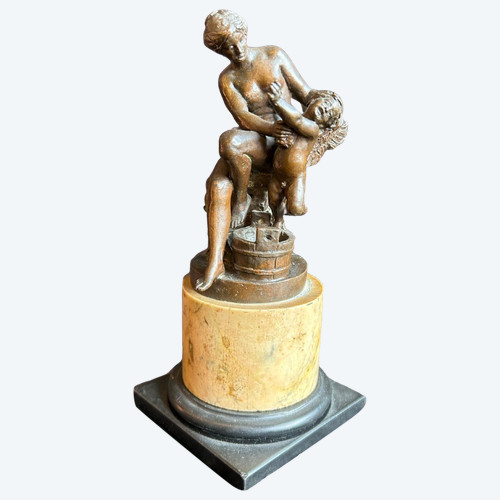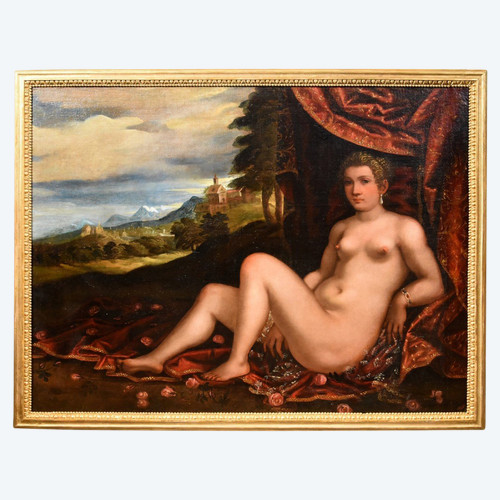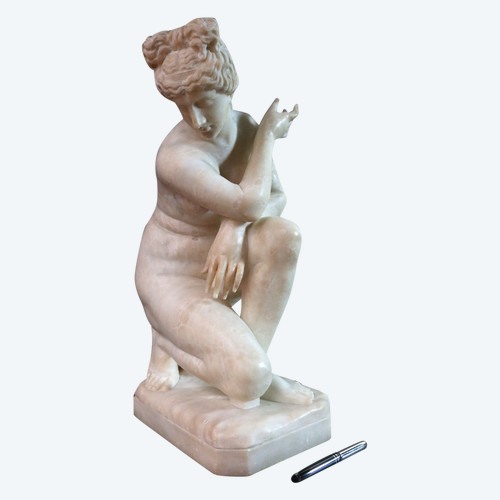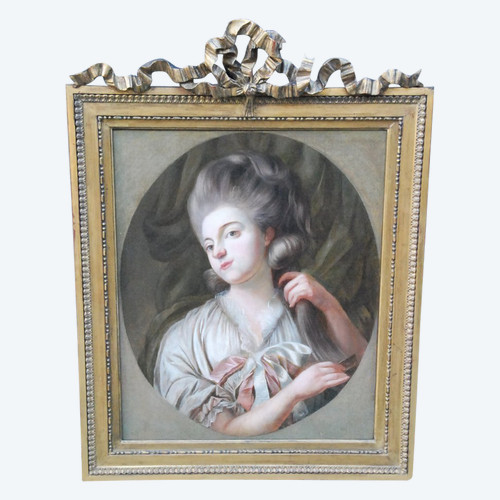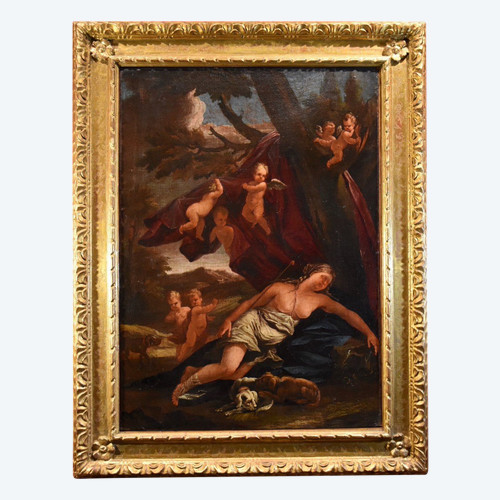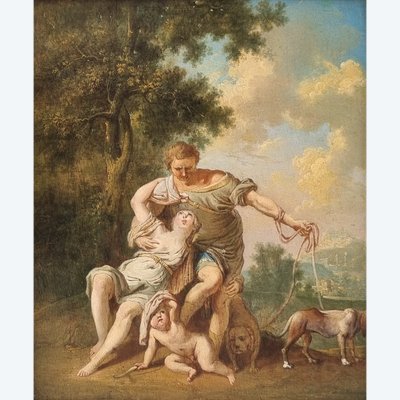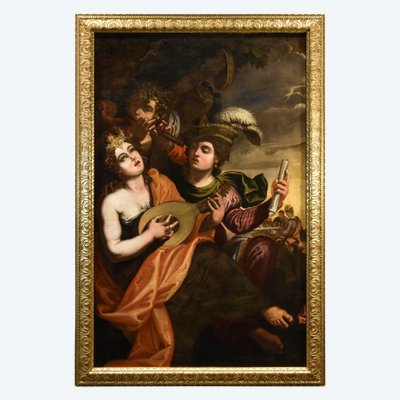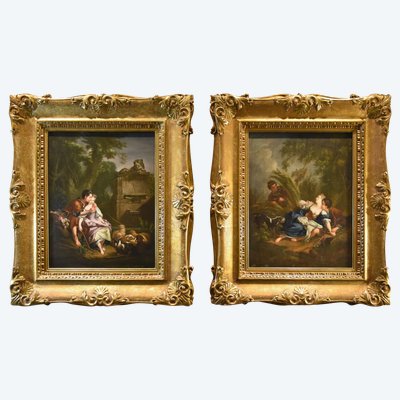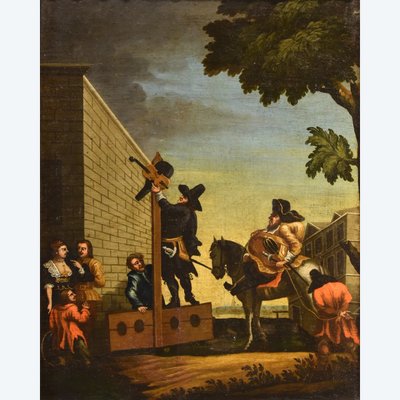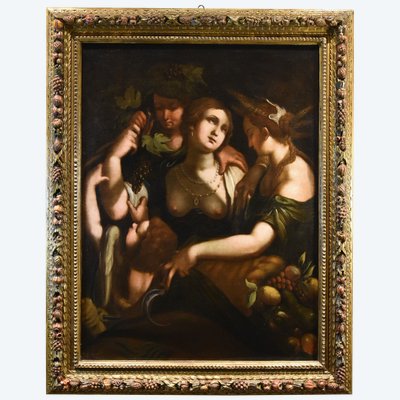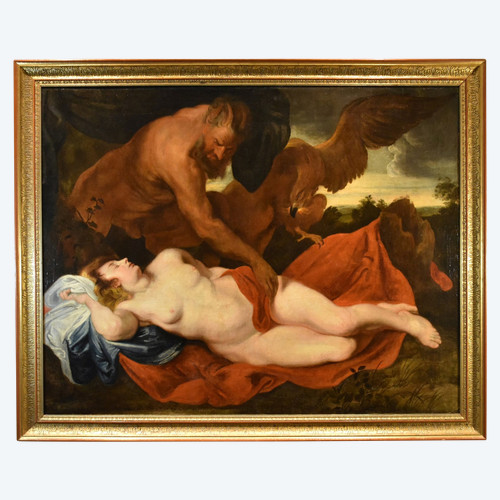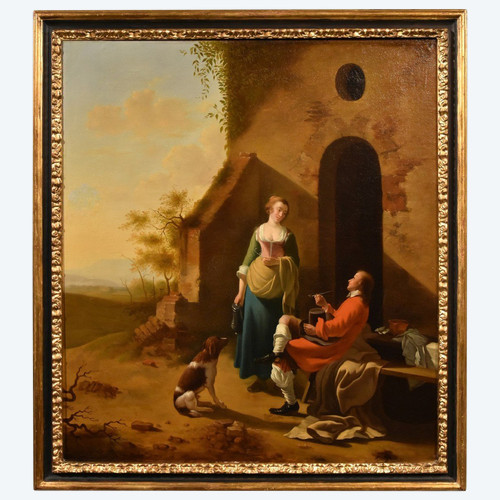This description has been translated and may not be completely accurate. Click here to see the original
Toilet of Venus Francesco Albani (Bologna 1578 - 1660) Follower of
Oil on canvas 64 x 96 cm In fine gilded frame 83 x 121 cm.
Full details of the work (click HERE)
The painting on offer, depicting ‘Venus’ Toilet', can be attributed to a master active between the 17th and 18th centuries, trained in the stylistic and compositional examples of the Bolognese artist Francesco Albani (Bologna 1578 - 1660).
A disciple of Annibale Carracci, Albani contributed significantly to the spread of Bolognese classicism, providing an interpretation that, in the latter part of his career, sounded more idyllic and pleasing to the more intimate tastes of his clients.
It is for this reason that the most intense and productive aspect of Albani's workshop can be seen in mythological paintings such as the one presented here, rather than in those with religious themes.
The composition in question, in particular, draws inspiration from the painting commissioned in 1621 by Ferdinando Gonzaga, sixth Duke of Mantua, for his residence ‘Villa Favorita’; after the nobleman's death, the work was sold to the Medici family of Florence in 1633, before passing into the collections of the Louvre Museum in Paris, where it remains today (https://collections.louvre.fr/ark:/53355/cl010062295).
[1] The Mantua canvas belongs to a cycle of four works depicting episodes from the life of Venus, here immortalised as she sits on the banks of a lake in front of a marvellous palace and makes herself beautiful to seduce Adonis. Other works of reference are the series of the four seasons created for Prince Borghese a few years earlier (see Spring: https://www.collezionegalleriaborghese. it/opere/toletta-di-venere-la-primavera): here too, the underlying theme of the works revolved around the loves of the gods, and in particular the rivalry between the two goddesses Diana and Venus, a conflict that reflects the struggle between the virtue of chastity and the vice of sensual love: this subject was hugely popular with collectors of the time.
Seventeenth-century classicism proposed idealised, ethereal and idyllic works of art, inspired by the great masters of the Renaissance such as Raphael and Titian, often dealing with themes from ancient history and classical mythology. In our painting, we can admire the beautiful Venus gazing at herself, sitting half-naked on her throne flanked by the three Graces. Finally, the scene, set in a lush garden enriched by gushing fountains with classical sculptures and architecture, is dotted with a myriad of winged Cupids and playful cherubs who animate the scene in a disorderly manner, playing with the fruits of the earth, heralding the awakening of nature and the arrival of spring. [1] Francesco Albani (Bologna, 1578 - 1660), La Toilette de Vénus (oil on canvas, 2 x 2.5 m.) Musée du Louvre (museum URL https://collections.louvre.fr/ark:/53355/cl010062295)
ADDITIONAL INFORMATION:
The painting is sold complete with a pleasant 19th-century gilded frame and comes with a certificate of authenticity and a descriptive iconographic card.
We take care of and organise the transport of purchased works, both in Italy and abroad, through professional and insured carriers.
If you would like to see this or other works in person, we would be delighted to welcome you to our new gallery in Riva del Garda, at Viale Giuseppe Canella 18. We look forward to seeing you!
Please contact us for any information or to arrange a visit, we will be happy to assist you.
Follow us on:
https://www.instagram.com/galleriacastelbarco/?hl=it
https://www.facebook.com/galleriacastelbarco/
Ref: U34JPNF4RH
 Solid Mahogany And Inlaid Art Deco Tray
390 € EUR
Solid Mahogany And Inlaid Art Deco Tray
390 € EUR

